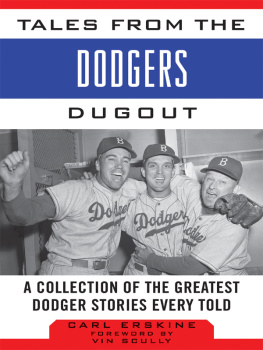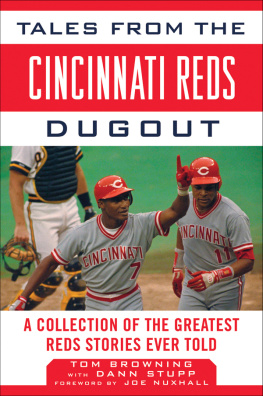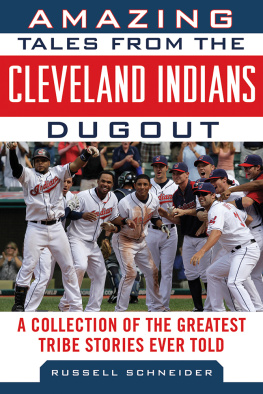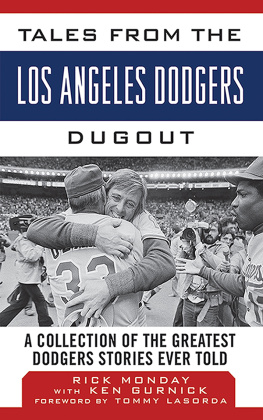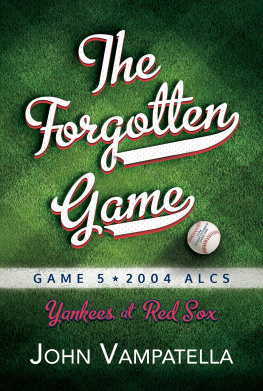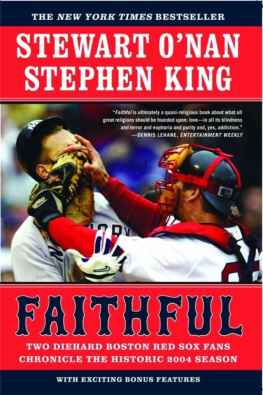Copyright 2014 by Jim Prime
All Rights Reserved. No part of this book may be reproduced in any manner without the express written consent of the publisher, except in the case of brief excerpts in critical reviews or articles. All inquiries should be addressed to Sports Publishing, 307 West 36th Street, 11th Floor, New York, NY 10018.
Sports Publishing books may be purchased in bulk at special discounts for sales promotion, corporate gifts, fund-raising, or educational purposes. Special editions can also be created to specifications. For details, contact the Special Sales Department, Sports Publishing, 307 West 36th Street, 11th Floor, New York, NY 10018 or .
Sports Publishing is a registered trademark of Skyhorse Publishing, Inc., a Delaware corporation.
Visit our website at www.sportspubbooks.com.
10 9 8 7 6 5 4 3 2 1
Library of Congress Cataloging-in-Publication Data is available on file
ISBN: 978-1-61321-687-3
Printed in the United States of America
C ONTENTS
This book is lovingly dedicated to Finley and Sam, my two wonderful grandsons. I hope that someday you get as much joy from baseball as I have.
I NTRODUCTION
S pring training is like a perennial Garden of Eden. Every year teams gather in idyllic, palm tree-bordered settings with a clean slate, free of sin and devoid of losses.
In the spring of 2004, I made my first and only trip to spring training. With three friends I traveled to Fort Myers, Florida, to see my beloved Boston Red Sox at City of Palms Park. The route from Halifax, Nova Scotia, was not the one the crow flies: Halifax to Toronto, Toronto to Boston, Boston to Tampa, and thus onward to Fort Myers. Little did I know that the Red Sox road to the World Championship would prove even more labyrinthine.
By coincidence, Toronto Blue Jays General Manager J. P. Riccardi was on the Toronto-to-Boston leg of the flight. My comrades and I were sporting our Red Sox dudscaps, T-shirtsand as he passed us on the way to his seat, he grinned and said, Dont worry guys, any team can have a bad millennium. Great comebacks always come to you much too late to be of practical use. We smiled sheepishly and took it. I mean, what could we have said, Oh yeah? When did the Jays last win the Series? His answer would have been 1992 and then again in 1993. And the only response to that would have been, Well, yeah but !
As a native of Worcester, Massachusetts, and once a devoted Red Sox fan, J. P. Riccardi knew that the 20th century had not been kind to the Olde Towne team. That enduring truth was doubtless as much a part of his upbringing as was an intimate knowledge of Paul Reveres ride or the political and personal fortunes of the Kennedy clan. It is the ever-present backdrop to life in the Commonwealth of Massachusetts.
The previous century had begun just fine with the Boston franchise winning the first World Series ever played, in 1903. They went on to win four more, in 1912, 1915, 1916, and 1918. It looked like the Red Sox had the makings of a dynasty, a team to end all teams. But what followed was a perfect storm of incompetence, greed, and neglect. The Sox somehow decided that selling Babe Ruth to the lowly New York Yankees was a good idea. Over the next few years, the team was systematically dismantled and its stars shipped off to other franchises, leaving only a skeleton crew to inhabit Fenway Park.
From that point the proud Red Sox history starts to deteriorate into a script that any self-respecting soap opera would have rejected as too melodramatic, too maudlin, too melancholy. With the exodus of stars, the Sox went into a downward spiral and only started to recover years later when millionaire Tom Yawkey used part of his inheritance to buy the club in 1933 as a birthday present for himself.
Yawkey tried everything over the next four and a half decades. He bought stars from other teams, scoured the countryside for prospects like Ted Williams, Bobby Doerr, and John Pesky, and established a high-quality farm system. The results were mixed.
Instead of just being bad, the Red Sox suddenly developed a penchant for being good enough to come close. Agonizingly close. In 1946, they won the American league pennant only to lose the World Series to the St. Louis Cardinals in seven games. They finished third the following year and in 47 and 48 came within a game of the pennant.
Then they slipped into the middle of the pack for almost twenty years only to emerge as the pennant winners in the Impossible Dream year of 1967. Once again the St. Louis Cardinals bested them in a seven-game World Series. In 1972 they were nudged out by a half game by the Detroit Tigers for the AL East title. In 1975 they won the AL pennant again but were beaten by the Cincinnati Reds in seven games in one of the greatest World Series ever played. In 1978 they came close enough to have the champagne on ice, only to collapse and lose the league championship in a playoff with the Yankees on a home run off the bat of light-hitting Bucky Dent.
In the 1986 October Classic, when Bill Buckner allowed a ground ball to skip past him, the New York Mets had already flashed their congratulations to the World Champion Boston Red Sox on their centerfield scoreboard. The Red Sox went on to lose that one too, of course, and Buckner unfairly became the symbol of a team that could not win the big game.
In 2003, it had looked good once again. But the Red Sox managed to extricate defeat from the clutches of victory in the most agonizing manner. This was the context in which I attended spring training, 2004. There were more subplots than a seasons worth of Game of Thrones . There was potential for discontent, mutiny, recrimination, and self-loathing. The team was replete with warriors who had been beaten down and humiliated. It should have been a smorgasbord of misery, a stew of insecurity.
The cumulative effect of all this past history surely had to take a toll on the players. If, as Yogi Berra wisely put it, 90 percent of the game is half mental then surely they must have shattered psyches and deflated egos. Lesser men have crumbled under lesser duress. Its one thing for fans to talk about next year. Many of us had been there in 1967 and 1975 and 1978 and 1986. Some could even hearken back to 1946 when Ted Williams failed to hit in the World Series, or 1948 when manager Joe McCarthy earned a place in the Red Sox hall of infamy by calling on so-so right-hander Denny Galehouse to pitch the sudden-death playoff instead of southpaw ace Mel Parnell.
All this preceded the spring training of 2004, but players did not have the luxury of sulking or philosophizing. They were out to end an 86-year drought. The acrid aroma of frustration, both historical and recent, lay heavy in the warm Florida air.

This book doesnt pretend to be a comprehensive, day-by-day history of the 2004 championship season. There are lots of those out there. Rather, its a collection of key moments from that season organized around the team members themselves. These players tell the story in a much more compelling manner than any writer or fan possibly could.
They were there, on the field, in the dugout, in the bullpen, and in the clubhouse. Taken as a whole, they tell the story of 2004 in an earthy way, with an authenticity and immediacy that takes you back to the moment. There is no shortage of dramatic and defining moments because 2004 was a magical, mystical season. Every day seemed to bring forth another storyline. Woven together, these stories capture the spirit of the season, the things that made this team special. It was much more than just the sum of its parts. The 2004 Red Sox roster was full of characters and character. It had grizzled veterans and fresh-faced kids, throw-ins and throwbacks, iconoclasts and a few self-professed idiots.




